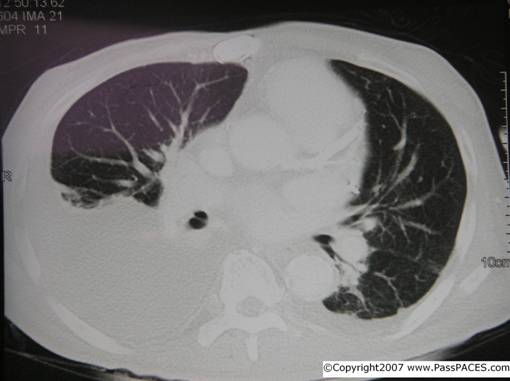
|
|
|||||
|
|
|
|
|
|
|
YOUR LATEST ISSUE ABOUT MRCP PACES IS HERE!
Look at this lady and proceed.( Neurology Station )
Discussion:
This young lady was asked to stay static during the filming. What do you notice?? I think all of you notice that this lady has some abnormal movement of her left hand especially over her fingers. So far, this is the best picture I can get from my hospital neurology ward. Yes, you may get a case of chorea in your MRCP PACES examination.
If you want to classify movement disorder, you can get two major types- either hypokinetic movement disorder ( such as Parkinson's disease) or hyperkinetic movement disorders. For hyperkinetic movement disorders, they can subdivided into rhythmical ( such as tremor) or irregular subtypes ( chorea, hemiballismus and myoclonus).
OK, OK..., for chorea, it belongs to irregualr subtype of hyperkinetic movement disorder. After you notice chorea in your patient during you MRCP PACES, always think of the possible underlying causes. I would like to divide the causes based on patient's age.
If you find that the patient is young, always think,
![]() Huntington's disease,
Huntington's disease,
![]() Autoimmune disease especially SLE,
Autoimmune disease especially SLE,
![]() Sydenham's chorea due to rheumatic fever,
Sydenham's chorea due to rheumatic fever,
![]() Chorea gravidorum, seen in pregnancy,
Chorea gravidorum, seen in pregnancy,
However, if you notice that patient is in the older age group, then think of the following,
![]() Stroke,
Stroke,
![]() Paraneoplastic syndrome,
Paraneoplastic syndrome,
![]() Polycythaemia vera,
Polycythaemia vera,
Now, you know that the possible differential diagnosis. You should proceed to show to examiners other features of chorea such as the following,
![]() 'milkmaid's grip'- ask the patient to squeeze your fingers. You would notice a squeezing and relaxing motion occurs,
'milkmaid's grip'- ask the patient to squeeze your fingers. You would notice a squeezing and relaxing motion occurs,
![]() 'bag of worms'- ask the patient to open his/her mouth- you would notice involuntary movement,
'bag of worms'- ask the patient to open his/her mouth- you would notice involuntary movement,
![]() Check for tendon reflexes ( 'pendular reflex'),
Check for tendon reflexes ( 'pendular reflex'),
You should not stop here because you need to find out the underlying cause, tell the examiners you want to check for,
![]() Signs to suggest autoimmune disease,
Signs to suggest autoimmune disease,
![]() Patient mental status and family history to suggest Huntington's disease,
Patient mental status and family history to suggest Huntington's disease,
![]() Recent history to suggest rheumatic fever,
Recent history to suggest rheumatic fever,
![]() To look for occult malignancy,
To look for occult malignancy,
Diagnosis: This lady has Sydenham's chorea due to Rheumatic fever.
Common questions examiners would ask you,
1) How do you differentiate chorea, hemiballimus and myoclonus?
2) What causes hemiballimus?
3) What is the inheritance pattern of Huntington's disease?
Extra points:
| Case ID:2 | Created: 14 November 2007 |
Interesting Images in Clinical Medicine

Case Summary:
This gentleman presents with shortness of breath and loss of weight. What is the diagnosis? Start your discussion with other PassPACES users in our Forum!
To see previous issues, click here! To send a quick comment, click here!